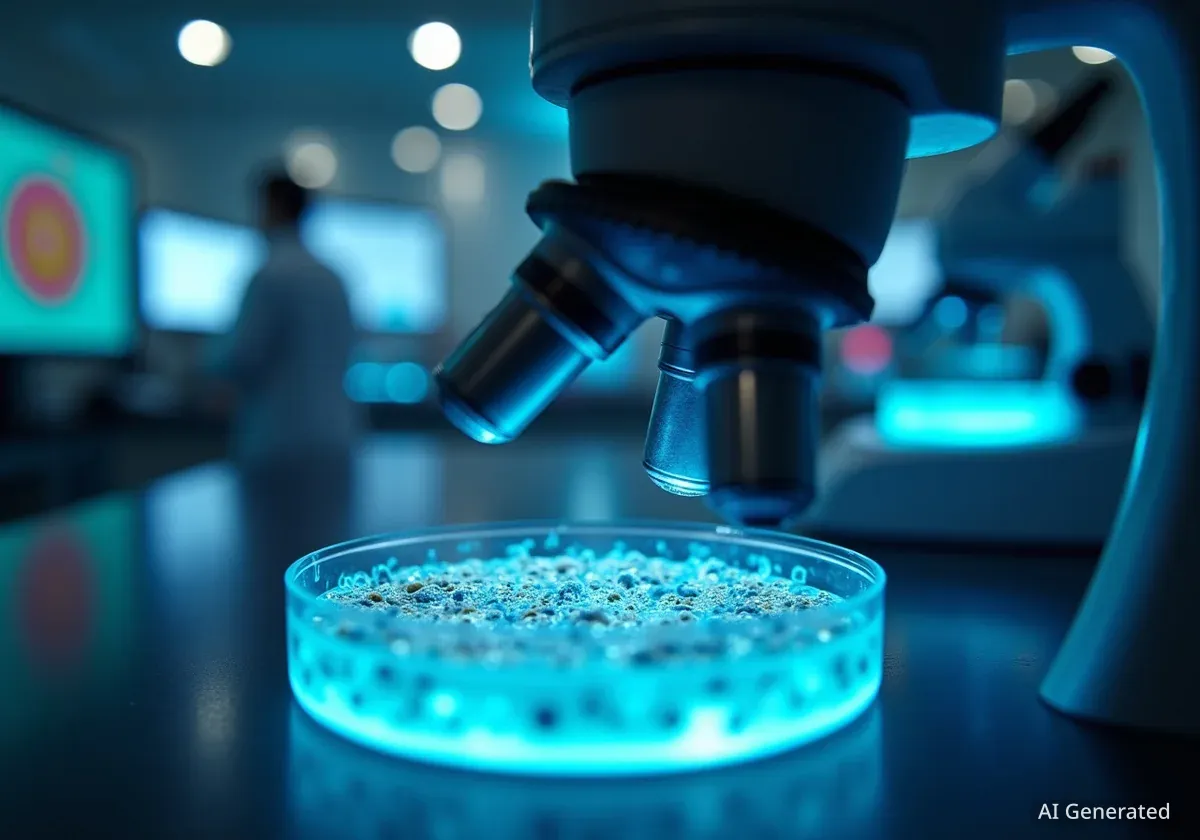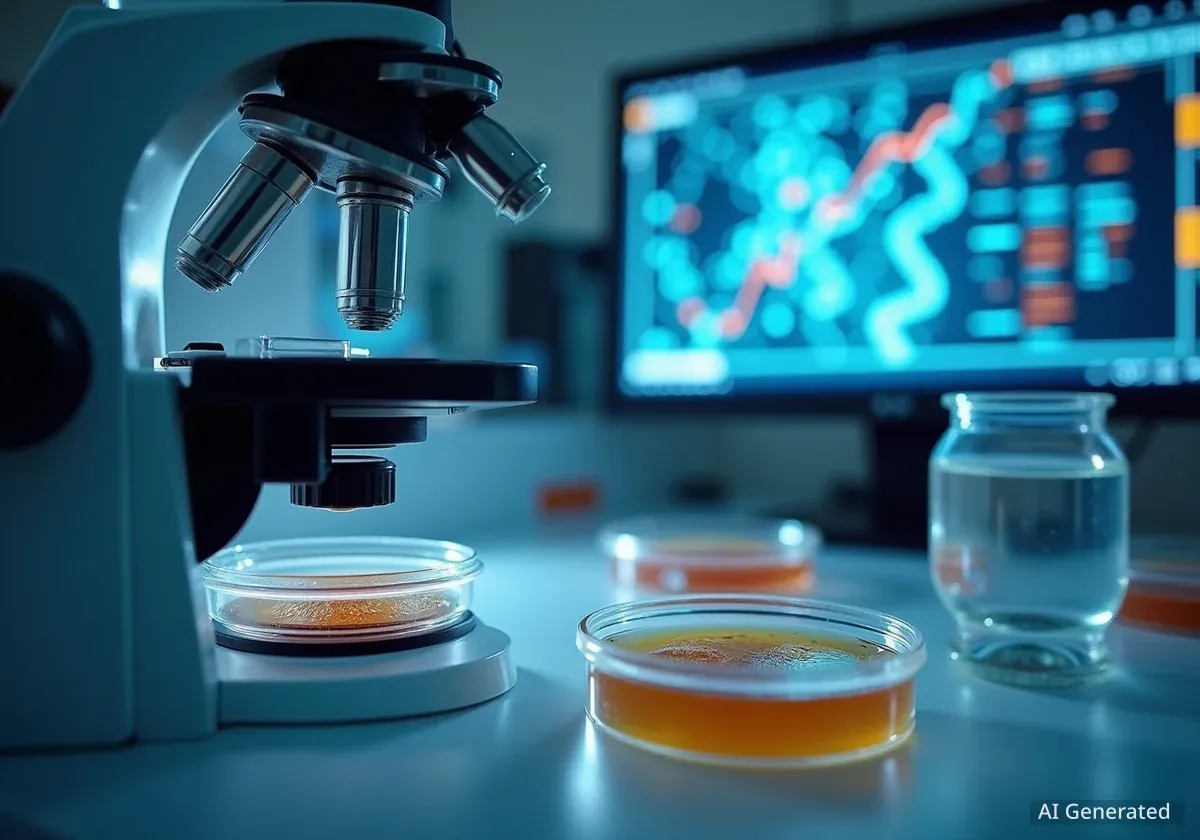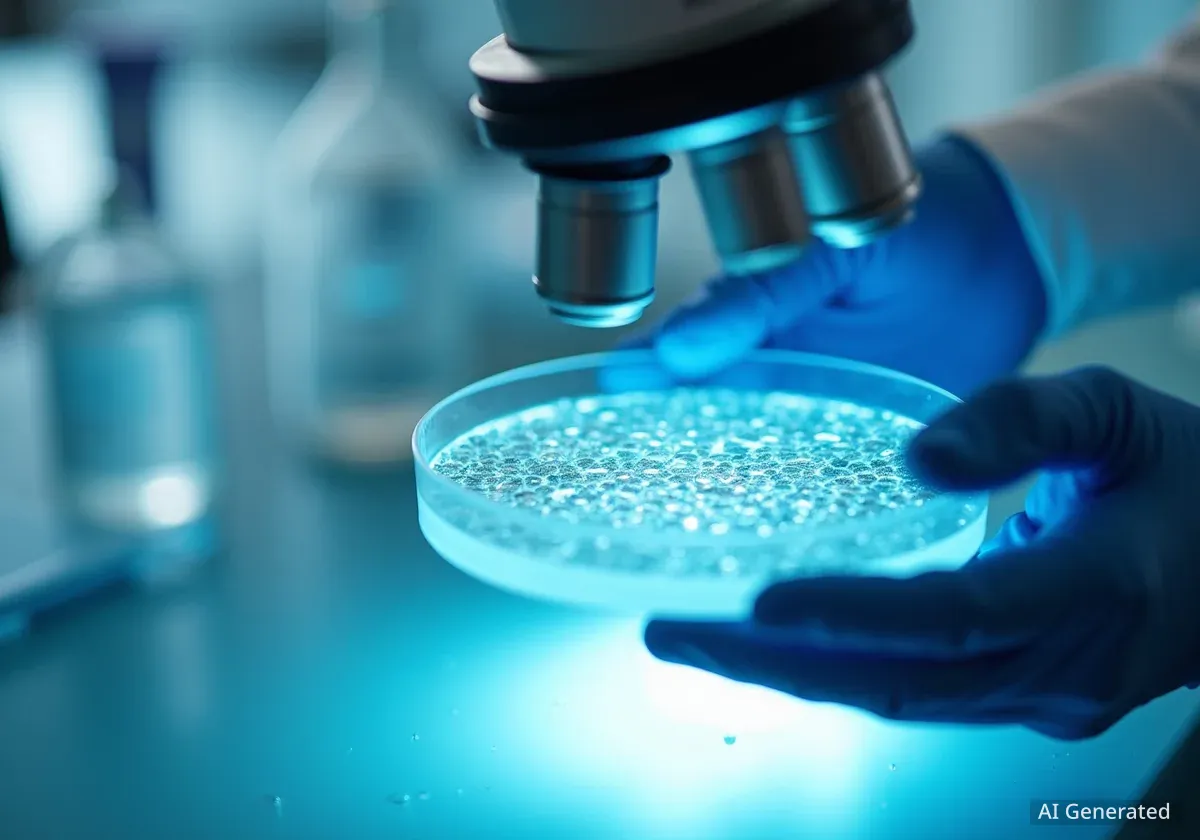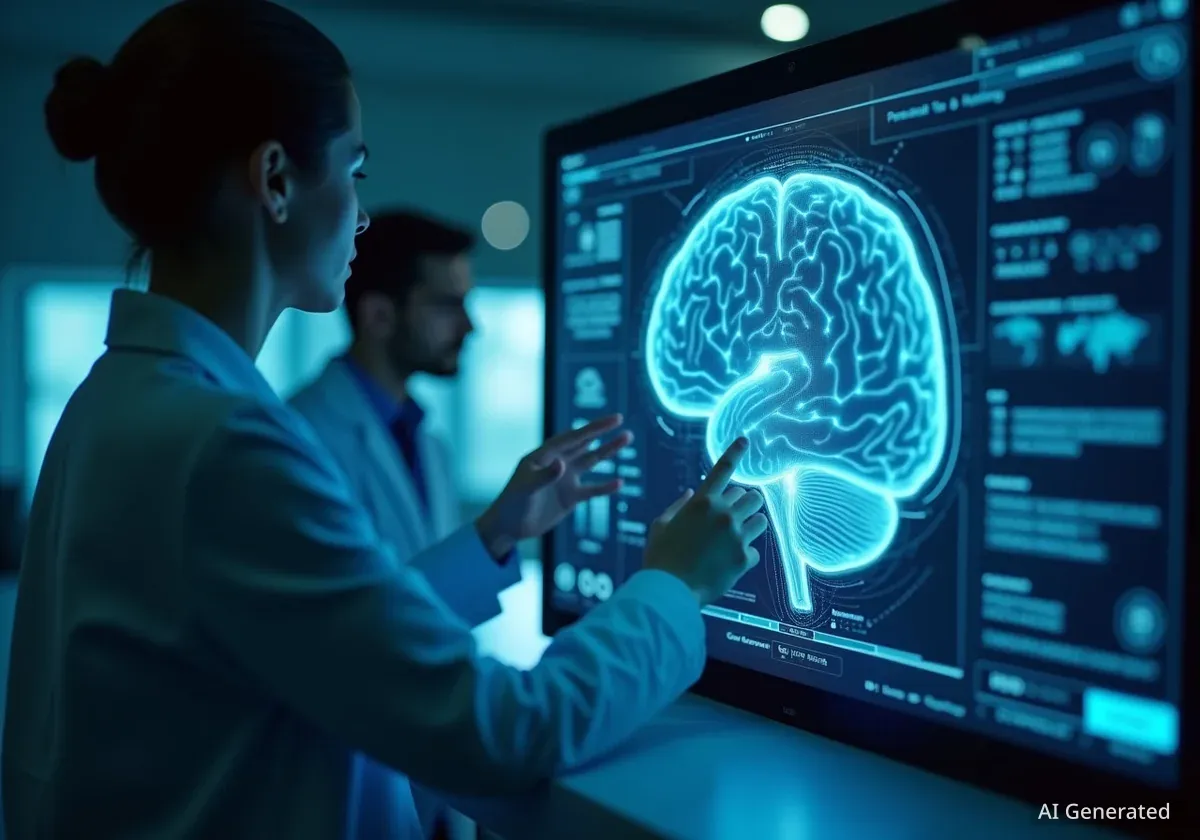Researchers have identified a new narrow-spectrum antibiotic, named enterololin, that specifically targets harmful gut bacteria without disrupting the beneficial microbiome. The discovery, detailed in a study published in Nature Microbiology, was guided by artificial intelligence and offers a promising new approach for treating infections linked to inflammatory bowel disease (IBD).
Unlike traditional broad-spectrum antibiotics that kill a wide range of bacteria, enterololin selectively acts against Enterobacteriaceae, a family of bacteria that includes drug-resistant pathogens. This targeted action was shown to be effective in mouse models while preserving the overall health of the gut ecosystem.
Key Takeaways
- A new antibiotic, enterololin, was discovered after screening over 10,000 compounds.
- It is a narrow-spectrum agent that specifically targets the Enterobacteriaceae family of bacteria.
- Artificial intelligence and deep learning were used to determine how the antibiotic works at a molecular level.
- In mouse studies, enterololin successfully treated infections linked to IBD while leaving the gut microbiome largely intact.
- The compound shows low toxicity to mammalian cells, suggesting a favorable safety profile for future development.
The Problem with Broad-Spectrum Antibiotics
For decades, the primary tool against bacterial infections has been broad-spectrum antibiotics. While effective at killing pathogens, these drugs also eliminate beneficial bacteria that are crucial for maintaining a healthy gut. This disruption, known as dysbiosis, can create an environment where harmful, often drug-resistant, bacteria can thrive.
This issue is particularly significant for individuals with inflammatory bowel disease (IBD). In these patients, dysbiosis can allow for the colonization of adherent-invasive Escherichia coli (AIEC), a pathogen that contributes to inflammation. The medical community has long recognized the urgent need for new antibiotics that can target specific pathogens without causing widespread damage to the gut microbiome.
What is AIEC?
Adherent-invasive E. coli (AIEC) is a type of bacteria frequently found in the intestines of people with Crohn's disease, a form of IBD. AIEC is capable of sticking to and invading intestinal cells, which can trigger and sustain chronic inflammation. Standard antibiotics often fail to clear AIEC and can worsen gut imbalance, making targeted treatments highly desirable.
A New Compound Emerges from Screening
To find a solution, the research team conducted a large-scale screening of 10,747 bioactive small molecules. They were searching for a compound with antibacterial activity specifically against AIEC. From this extensive search, one molecule stood out: enterololin.
Initial tests revealed that enterololin had targeted activity against the Enterobacteriaceae family. This family includes not only E. coli but also other notable pathogens like Klebsiella pneumoniae. This specificity is a key advantage, as it means the antibiotic could potentially treat infections without the collateral damage seen with current therapies.
Further experiments showed that enterololin's effectiveness could be enhanced. When combined with a low dose of SPR741, a compound that increases the permeability of the bacterial outer membrane, enterololin was able to overcome both intrinsic and acquired resistance mechanisms in clinical bacterial isolates.
Artificial Intelligence Reveals How It Works
Understanding an antibiotic's mechanism of action is critical for its development into a viable drug. The researchers turned to advanced deep learning models to predict how enterololin interacts with bacterial cells. The AI analysis pointed to a specific target: the LolCDE complex.
The LolCDE Complex: A Critical Target
The LolCDE complex is an essential protein transporter in Gram-negative bacteria. Its job is to move lipoproteins from the inner membrane to the outer membrane of the cell. Disrupting this process is fatal for the bacteria. By targeting this complex, enterololin effectively cripples a vital cellular function.
The AI's prediction was confirmed through laboratory experiments. Researchers evolved bacteria to become resistant to enterololin and then sequenced their genomes. The majority of mutations that conferred resistance were found in the lolC and lolE genes, which are the very genes that code for the LolCDE complex. This provided strong evidence that the AI model had correctly identified the antibiotic's target.
"This study highlights the utility of deep learning methods for predicting molecular interactions and identifies a promising Enterobacteriaceae-specific antibacterial candidate for further development," the authors wrote in the study published in Nature Microbiology.
Promising Results in Preclinical Studies
With a clear mechanism identified, the team tested enterololin in animal models. In mice infected with AIEC, the combination of enterololin and SPR741 successfully suppressed the infection. This demonstrated its potential as a therapeutic agent in a living organism.
Crucially, the treatment had a minimal impact on the overall composition of the gut microbiome. Fecal sample analysis showed that, unlike broad-spectrum antibiotics which cause significant shifts in bacterial populations, the enterololin combination largely preserved the natural diversity of the gut flora. This microbiome-sparing quality is one of the most significant findings of the study.
Safety is another key consideration for any new drug. Laboratory tests showed that enterololin has low cytotoxicity against human cells, indicating it is unlikely to be harmful to the patient. The frequency of resistance was also found to be low, at approximately one in 10 million to one in 100 million bacteria.
Implications for Medicine and Drug Discovery
The discovery of enterololin represents a major step forward in the fight against antibiotic resistance and microbiome-related diseases. Its narrow-spectrum activity offers a path toward more precise treatments that address infections without causing unintended harm to the patient's gut health.
For patients with IBD, a drug like enterololin could offer a way to manage harmful bacterial colonization without the negative side effects of current antibiotics. This could potentially reduce inflammation and improve overall outcomes.
The study also serves as a powerful example of how artificial intelligence can accelerate drug discovery. By using deep learning to predict a compound's mechanism, researchers were able to bypass months or even years of traditional laboratory work. This approach could be applied to discover other novel antibiotics and therapies for a wide range of diseases in the future.





